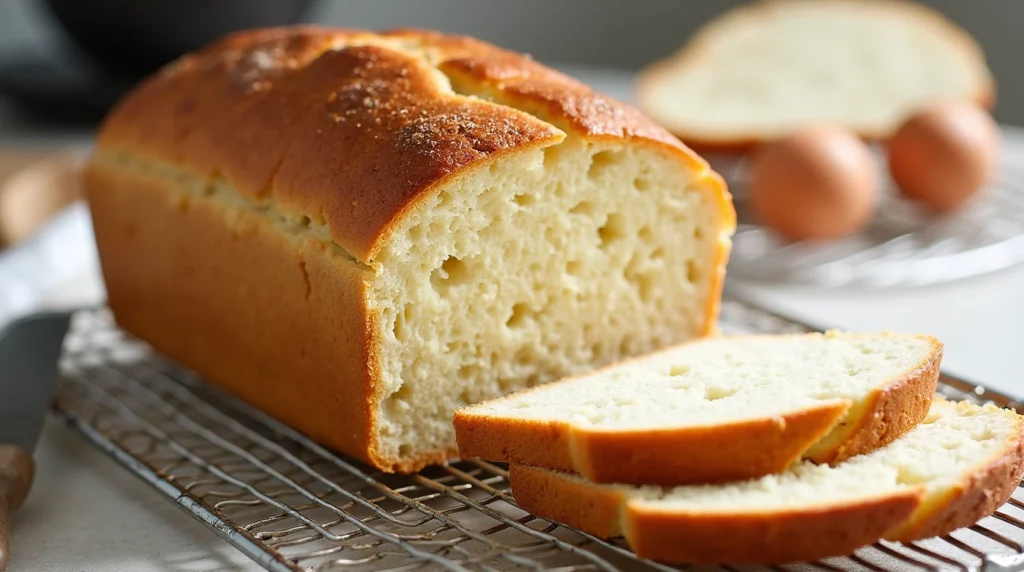Cottage cheese is often overlooked in the world of baking, but it’s a hidden gem that can elevate your recipes in surprising ways. This versatile ingredient not only adds moisture and texture but also packs a nutritional punch. Whether you’re whipping up pancakes, muffins, or even a creamy cheesecake, understanding the role of cottage cheese can transform your baking game. In this article, we’ll explore the benefits of using cottage cheese in baking, popular recipes, and tips to make the most of this dairy delight. Let’s dive into the wonderful world of cottage cheese!
Introduction to Cottage Cheese in Baking
Overview of Cottage Cheese in Baking
Cottage cheese is a fresh cheese made from curds that have been drained of their whey. It’s known for its mild flavor and lumpy texture, which can be a delightful addition to various baked goods. Historically, cottage cheese has been used in many cultures, often as a healthy alternative to richer cheeses. In baking, it serves multiple purposes, making it a fantastic ingredient to experiment with.
Importance of Cottage Cheese in Baking
So, why should you consider using cottage cheese in your baking? For starters, it’s a powerhouse of nutrition. Packed with protein, it can help you feel fuller for longer, making it a great choice for those looking to maintain a healthy diet. Additionally, its versatility means it can be used in both sweet and savory recipes. From adding moisture to enhancing texture, cottage cheese can do it all!
In the following sections, we’ll delve deeper into the nutritional profile of cottage cheese, its functions in baking, and some delicious recipes that showcase its unique qualities. Whether you’re a seasoned baker or just starting, you’ll find plenty of inspiration to incorporate this ingredient into your kitchen creations.
Nutritional Profile of Cottage Cheese
Macronutrients
When it comes to baking, understanding the nutritional profile of cottage cheese is essential. This ingredient is particularly rich in macronutrients, making it a smart choice for health-conscious bakers.
- Protein Content: One of the standout features of cottage cheese is its high protein content. A typical serving contains about 25 grams of protein, which is fantastic for muscle repair and growth. This makes it an excellent addition to baked goods, especially for those looking to boost their protein intake without resorting to heavy or fatty ingredients.
- Fat Content: Depending on the type you choose, cottage cheese can be low in fat or full-fat. Low-fat varieties contain around 1% to 2% fat, while full-fat options can have up to 4%. This flexibility allows you to select the right type based on your dietary needs. Using low-fat cottage cheese can help keep your baked goods lighter, while full-fat versions can add richness and creaminess.
- Carbohydrates: Cottage cheese is relatively low in carbohydrates, with about 6 grams per serving. This makes it a suitable option for those following low-carb diets. Plus, its low sugar content means you can enjoy it without worrying about excessive sweetness in your baked treats.
Micronutrients
Cottage cheese isn’t just about macronutrients; it’s also packed with essential vitamins and minerals that contribute to overall health.
- Vitamins: Cottage cheese is a good source of B vitamins, particularly B12, which is crucial for energy production and maintaining healthy nerve cells. It also contains riboflavin (B2) and folate, both of which play vital roles in metabolism and cell function.
- Minerals: This cheese is rich in calcium, which is essential for strong bones and teeth. Additionally, it contains phosphorus, selenium, and magnesium, all of which contribute to various bodily functions, including muscle contraction and energy production.
Comparison with Other Dairy Products
When comparing cottage cheese to other dairy products, it stands out for its unique combination of protein and low fat.
- Cottage Cheese vs. Yogurt: While yogurt is often praised for its probiotics, cottage cheese offers a higher protein content, making it a better choice for those looking to increase their protein intake.
- Cottage Cheese vs. Ricotta: Ricotta is creamier and richer, but it also contains more fat and calories. Cottage cheese, on the other hand, provides a lighter option without sacrificing nutritional value.
- Cottage Cheese vs. Cream Cheese: Cream cheese is delicious but high in fat and calories. Cottage cheese can be a healthier alternative in recipes, providing creaminess without the extra calories.
Functions of Cottage Cheese in Baking
Cottage cheese is more than just a nutritious ingredient; it plays several crucial roles in baking that can enhance your recipes in delightful ways. Let’s explore the various functions of cottage cheese and how it can transform your baked goods.
Moisture Retention
One of the standout functions of cottage cheese in baking is its ability to retain moisture. When you incorporate cottage cheese into your recipes, it helps keep your baked goods moist and tender. This is particularly beneficial in items like muffins and pancakes, where dryness can be a common issue.
- Why Moisture Matters: Moisture is key to achieving that perfect texture in baked goods. A dry muffin or pancake can be a major letdown, but the addition of cottage cheese ensures that your treats stay soft and enjoyable.
- Examples of Recipes: Think about fluffy cottage cheese pancakes or moist muffins. The cottage cheese not only adds moisture but also contributes to a delightful texture that keeps you coming back for more.
Texture Enhancement
Cottage cheese can significantly enhance the texture of your baked goods. Its unique lumpy consistency can add a delightful creaminess that you won’t find with other ingredients.
- Creamy Texture: When blended into batters, cottage cheese creates a creamy texture that can elevate the overall mouthfeel of your baked items. This is especially true in recipes like cheesecakes or creamy breads, where a smooth texture is desired.
- Comparison with Other Ingredients: While ingredients like yogurt or sour cream can also add creaminess, cottage cheese offers a distinct texture that can set your recipes apart. It provides a unique bite that can make your baked goods more interesting.
Flavor Profile
While cottage cheese has a mild flavor, it can subtly enhance the overall taste of your baked goods. It acts as a blank canvas, allowing other flavors to shine while adding a hint of creaminess.
- Subtle Flavor Addition: The mildness of cottage cheese means it won’t overpower your recipes. Instead, it complements other ingredients, making it a versatile choice for both sweet and savory dishes.
- Pairing with Other Ingredients: Cottage cheese pairs beautifully with fruits, spices, and even chocolate. For instance, adding cottage cheese to a banana bread recipe can enhance the flavor while keeping it moist and delicious.
Binding Agent
Another important function of cottage cheese in baking is its role as a binding agent. It helps hold ingredients together, ensuring that your baked goods maintain their shape and structure.
- Binding Properties: The protein content in cottage cheese acts as a binder, similar to eggs or flour. This is particularly useful in recipes like muffins or bread, where you want everything to come together seamlessly.
- Examples of Baked Goods: Think about cottage cheese bread or savory muffins. The cottage cheese not only binds the ingredients but also adds moisture and flavor, resulting in a delightful final product.
Popular Recipes Using Cottage Cheese
Now that we’ve explored the various functions of cottage cheese in baking, let’s dive into some delicious recipes that highlight its versatility. Whether you’re in the mood for breakfast, a snack, or dessert, these recipes will inspire you to incorporate cottage cheese into your baking routine.
Cottage Cheese Pancakes
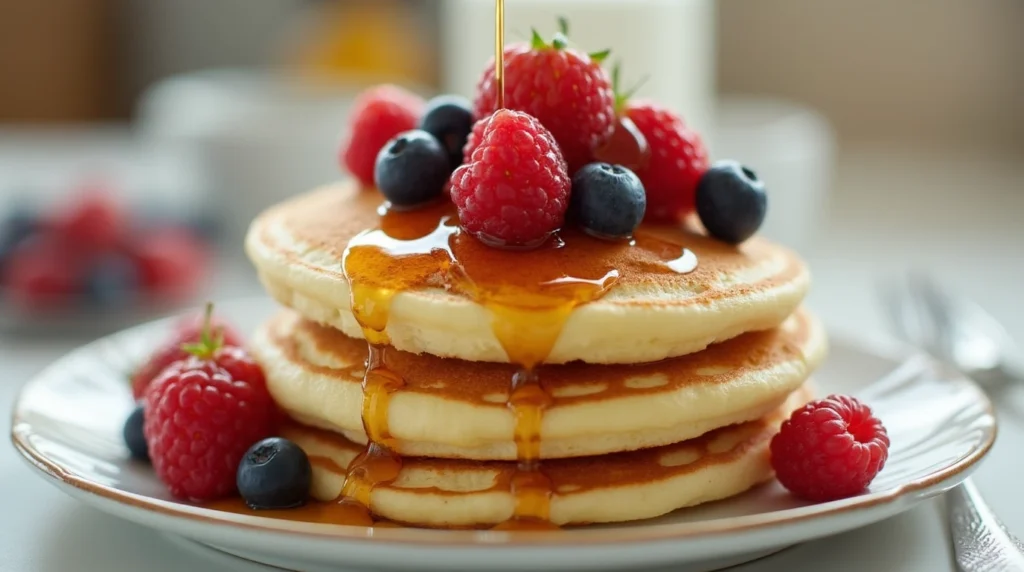
Who doesn’t love a stack of fluffy pancakes? Cottage cheese pancakes are a fantastic way to start your day with a protein boost.
Ingredients:
- 1 cup cottage cheese
- 1 cup rolled oats
- 2 eggs
- 1 teaspoon baking powder
- 1 teaspoon vanilla extract
- A pinch of salt
- Optional: Fresh fruits or chocolate chips for topping
Preparation:
- In a blender, combine the cottage cheese, rolled oats, eggs, baking powder, vanilla extract, and salt. Blend until smooth.
- Heat a non-stick skillet over medium heat and lightly grease it.
- Pour about 1/4 cup of the batter onto the skillet for each pancake. Cook until bubbles form on the surface, then flip and cook until golden brown.
- Serve warm with your favorite toppings, such as fresh fruits or a drizzle of maple syrup.
These pancakes are not only delicious but also packed with protein, making them a perfect breakfast option!
Cottage Cheese Muffins
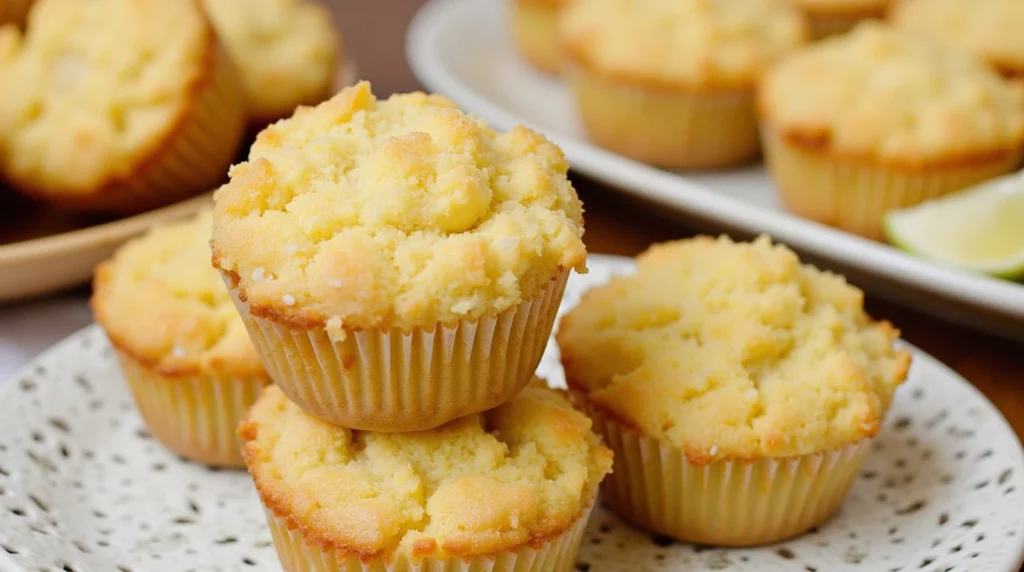
Muffins are a great on-the-go snack, and adding cottage cheese makes them even more nutritious.
Ingredients:
- 1 cup cottage cheese
- 1 cup whole wheat flour
- 1/2 cup sugar (or a sugar substitute)
- 1/2 cup milk
- 2 eggs
- 1 teaspoon baking soda
- 1 teaspoon baking powder
- 1 teaspoon cinnamon
- Optional: Nuts or dried fruits for added texture
Preparation:
- Preheat your oven to 350°F (175°C) and line a muffin tin with paper liners.
- In a large bowl, mix together the cottage cheese, milk, and eggs until well combined.
- In another bowl, whisk together the flour, sugar, baking soda, baking powder, and cinnamon.
- Gradually add the dry ingredients to the wet mixture, stirring until just combined. Fold in any optional nuts or dried fruits.
- Divide the batter evenly among the muffin cups and bake for 20-25 minutes, or until a toothpick inserted in the center comes out clean.
These muffins are moist, flavorful, and perfect for breakfast or a snack!
Cottage Cheese Bread
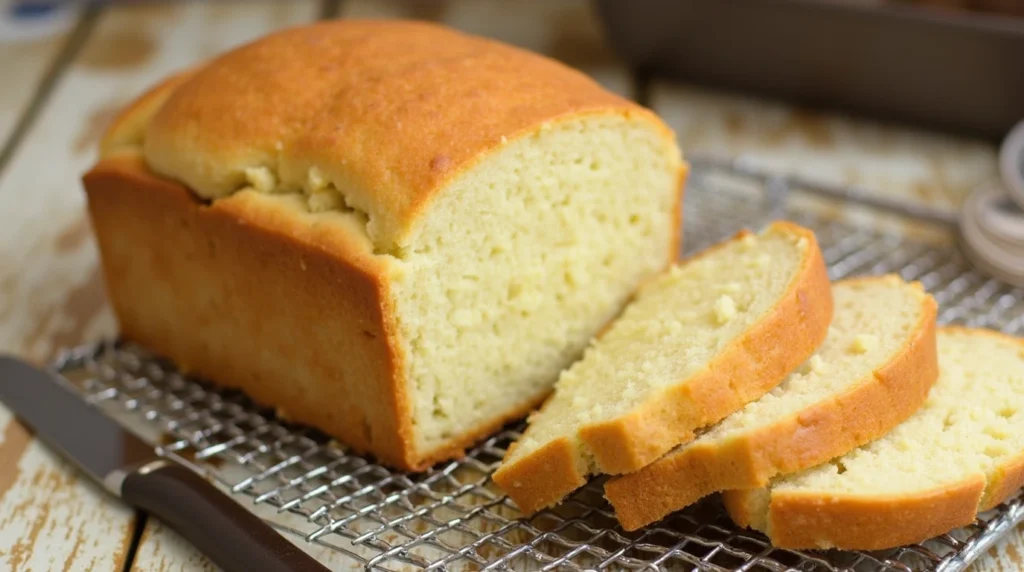
If you’re looking for a unique bread recipe, cottage cheese bread is a must-try. It’s soft, flavorful, and perfect for sandwiches or toast.
Ingredients:
- 1 cup cottage cheese
- 2 cups all-purpose flour
- 1/4 cup sugar
- 1/4 cup vegetable oil
- 2 eggs
- 1 teaspoon baking soda
- 1 teaspoon baking powder
- 1 teaspoon salt
Preparation:
- Preheat your oven to 350°F (175°C) and grease a loaf pan.
- In a large bowl, mix together the cottage cheese, sugar, vegetable oil, and eggs until smooth.
- In another bowl, combine the flour, baking soda, baking powder, and salt.
- Gradually add the dry ingredients to the wet mixture, stirring until just combined.
- Pour the batter into the prepared loaf pan and bake for 45-50 minutes, or until a toothpick inserted in the center comes out clean.
This bread is not only delicious but also a great way to incorporate cottage cheese into your diet!
Cottage Cheese Cheesecake
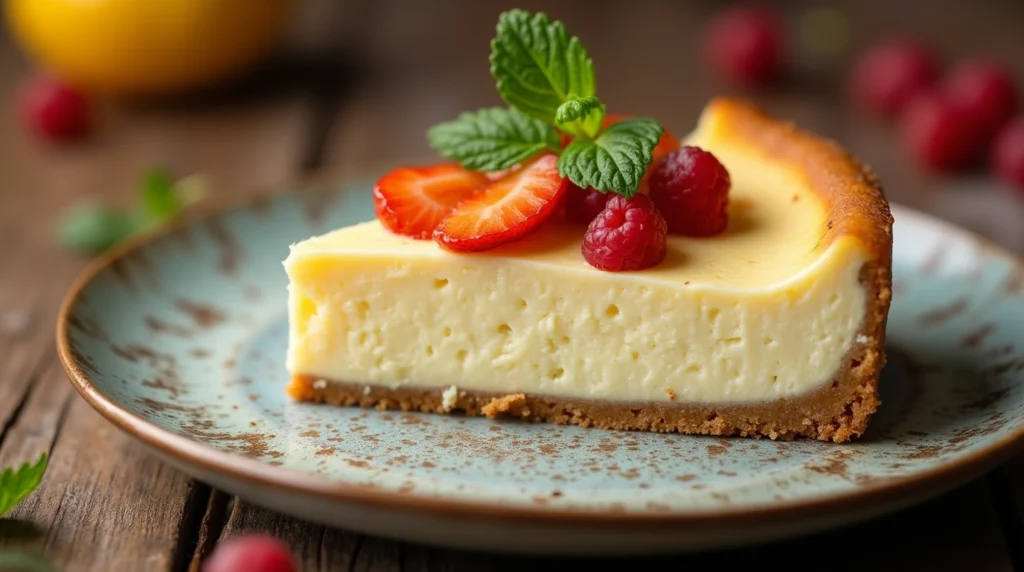
For dessert lovers, a cottage cheese cheesecake is a lighter alternative to traditional cheesecake, without sacrificing flavor.
Ingredients:
- 2 cups cottage cheese
- 1 cup sugar
- 3 eggs
- 1 teaspoon vanilla extract
- 1/4 cup lemon juice
- 1/4 cup all-purpose flour
- Optional: Graham cracker crust
Preparation:
- Preheat your oven to 325°F (160°C).
- In a blender, combine the cottage cheese, sugar, eggs, vanilla extract, lemon juice, and flour. Blend until smooth.
- If using a graham cracker crust, press it into the bottom of a springform pan. Pour the cheesecake mixture over the crust.
- Bake for 45-50 minutes, or until the center is set and slightly jiggly.
- Allow to cool before refrigerating for at least 4 hours before serving.
This cheesecake is creamy, tangy, and a delightful way to end any meal!
Tips for Baking with Cottage Cheese
Baking with cottage cheese can be a game-changer, but there are a few tips and tricks to ensure you get the best results. Here’s how to make the most of this versatile ingredient in your baking endeavors.
Choosing the Right Type of Cottage Cheese
Not all cottage cheese is created equal, and selecting the right type can make a significant difference in your baked goods.
- Different Types: You’ll find various types of cottage cheese available, including low-fat, full-fat, and even lactose-free options. Low-fat cottage cheese is great for those looking to cut calories, while full-fat varieties can add richness and creaminess to your recipes.
- Texture Matters: Cottage cheese comes in different curd sizes small, medium, and large. For baking, small-curd cottage cheese is often preferred, as it blends more smoothly into batters and doughs. However, if you enjoy a bit of texture, medium-curd can work well in certain recipes, like muffins or pancakes.
Substituting Cottage Cheese in Recipes
Cottage cheese can often be used as a substitute for other ingredients, making it a versatile addition to your pantry.
- Replacing Other Ingredients: You can replace ingredients like sour cream, ricotta, or even cream cheese with cottage cheese in many recipes. For instance, if a recipe calls for sour cream, using cottage cheese can reduce the fat content while still providing creaminess.
- Adjustments Needed: When substituting, keep in mind that cottage cheese has a different moisture content. You may need to adjust the amount of liquid in your recipe slightly. For example, if you’re using cottage cheese instead of cream cheese, you might want to reduce the liquid ingredients to maintain the right consistency.
Storage and Shelf Life
Proper storage of cottage cheese is essential to maintain its freshness and quality, especially when you plan to use it in baking.
- Best Practices for Storing: Always keep cottage cheese refrigerated. Once opened, it should be consumed within 5 to 7 days for optimal freshness. Make sure to seal the container tightly to prevent it from absorbing odors from other foods in the fridge.
- How to Tell if Cottage Cheese Has Gone Bad: If you notice any off smells, discoloration, or an unusual texture, it’s best to err on the side of caution and discard it. Fresh cottage cheese should have a mild, slightly tangy smell and a creamy texture.
FAQs About Baking with Cottage Cheese
As you explore the world of baking with cottage cheese, you might have some questions. Here are some frequently asked questions that can help clarify how to best use this versatile ingredient in your recipes.
1. Can I use cottage cheese instead of cream cheese in baking?
Absolutely! Cottage cheese can be a great substitute for cream cheese in many recipes. It provides a similar creamy texture while being lower in fat and calories. Just keep in mind that cottage cheese has a different flavor profile, so it may slightly alter the taste of your dish. Blending the cottage cheese until smooth can help mimic the texture of cream cheese more closely.
2. Is cottage cheese a good substitute for sour cream?
Yes, cottage cheese can effectively replace sour cream in recipes. It adds creaminess and moisture while reducing the overall fat content. For a closer match in flavor, you can blend cottage cheese with a bit of lemon juice or vinegar to achieve that tangy taste associated with sour cream. This works particularly well in dips, dressings, and baked goods.
3. How does cottage cheese affect the rise of baked goods?
Cottage cheese can contribute to the rise of baked goods due to its moisture content and protein. The moisture helps create steam during baking, which can lead to a lighter texture. Additionally, the protein in cottage cheese can provide structure, helping your baked goods rise properly. Just be sure to balance the moisture levels in your recipe to avoid overly dense results.
4. Can I use cottage cheese in gluten-free baking?
Yes, you can use cottage cheese in gluten-free baking! It can add moisture and protein to gluten-free recipes, which can sometimes lack structure. When using cottage cheese in gluten-free baked goods, consider pairing it with gluten-free flours like almond flour or coconut flour to achieve the desired texture. Just remember to adjust the liquid content as needed.
5. What are some dairy-free alternatives to cottage cheese in baking?
If you’re looking for dairy-free alternatives to cottage cheese, there are several options available. Silken tofu can be blended until smooth to mimic the texture of cottage cheese, making it a great substitute in recipes. Additionally, dairy-free yogurt or cashew cream can provide similar creaminess and moisture. Just be sure to choose unsweetened varieties to maintain the flavor balance in your baked goods.
Conclusion
Cottage cheese is a remarkable ingredient that can enhance your baking in numerous ways. From its impressive nutritional profile to its ability to retain moisture, improve texture, and act as a binding agent, cottage cheese is a versatile addition to both sweet and savory recipes. Whether you’re making pancakes, muffins, bread, or cheesecake, incorporating cottage cheese can elevate your dishes while keeping them healthy.
So, why not give cottage cheese a try in your next baking adventure? With its unique properties and health benefits, it’s an ingredient that can truly transform your recipes. Don’t be afraid to experiment and discover new ways to incorporate this dairy delight into your favorite baked goods. Happy baking!

